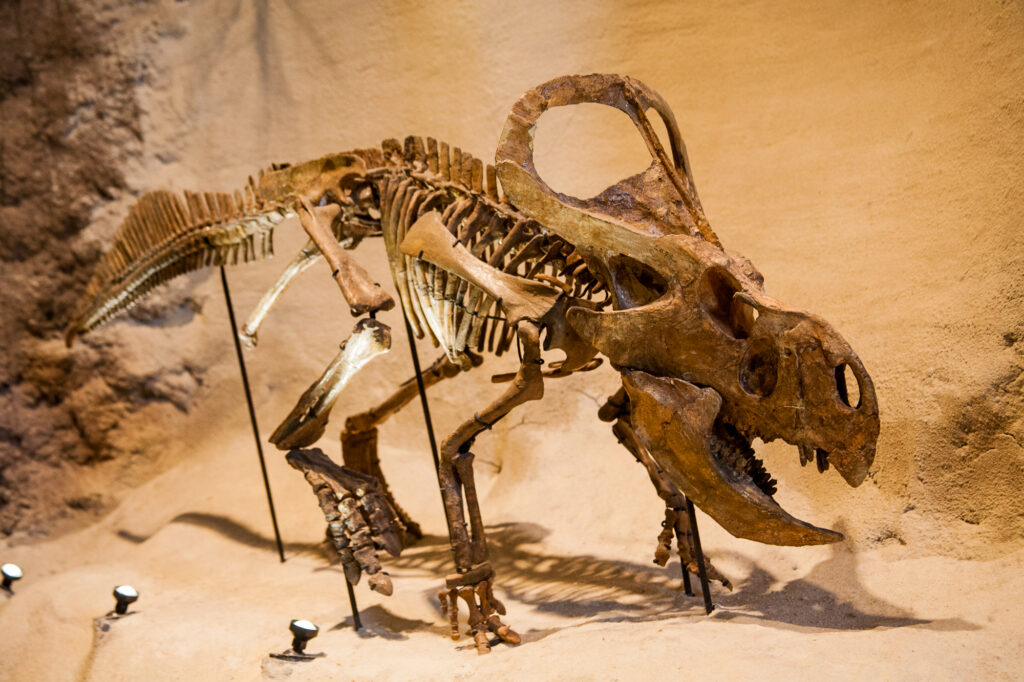The Mesozoic Era, spanning approximately 252 to 66 million years ago, was dominated by some of the most fearsome predators to ever walk the Earth. While the iconic Tyrannosaurus rex and other large theropods have captured the public imagination as fearsome carnivores, paleontologists have increasingly uncovered evidence suggesting a specialized feeding behavior among certain Mesozoic predators: bone-crunching. This article explores the fascinating evidence for bone-crunching behaviors in Mesozoic animals, examining the anatomical adaptations, fossil evidence, and ecological significance of creatures that didn’t just consume flesh, but processed bones as part of their feeding strategy.
Defining Bone-Crunching Behavior
Bone-crunching, or ostecophagy, refers to the specialized feeding behavior where predators or scavengers consume and process bones as part of their diet. This behavior exists along a spectrum, from animals that occasionally crack open bones to access nutritious marrow, to specialized bone-crushers that systematically break down and digest bone material. In modern ecosystems, spotted hyenas represent the pinnacle of bone-crunching adaptation, with specialized dentition and powerful jaw muscles that allow them to process bones that other predators leave behind. The evidence for similar specializations in Mesozoic fauna comes from multiple lines of investigation, including dental morphology, jaw biomechanics, coprolite (fossil feces) analysis, and prey bone damage patterns. Understanding these specialized feeding behaviors provides crucial insights into Mesozoic food webs and ecological relationships.
Dental Adaptations in Mesozoic Bone-Crunchers
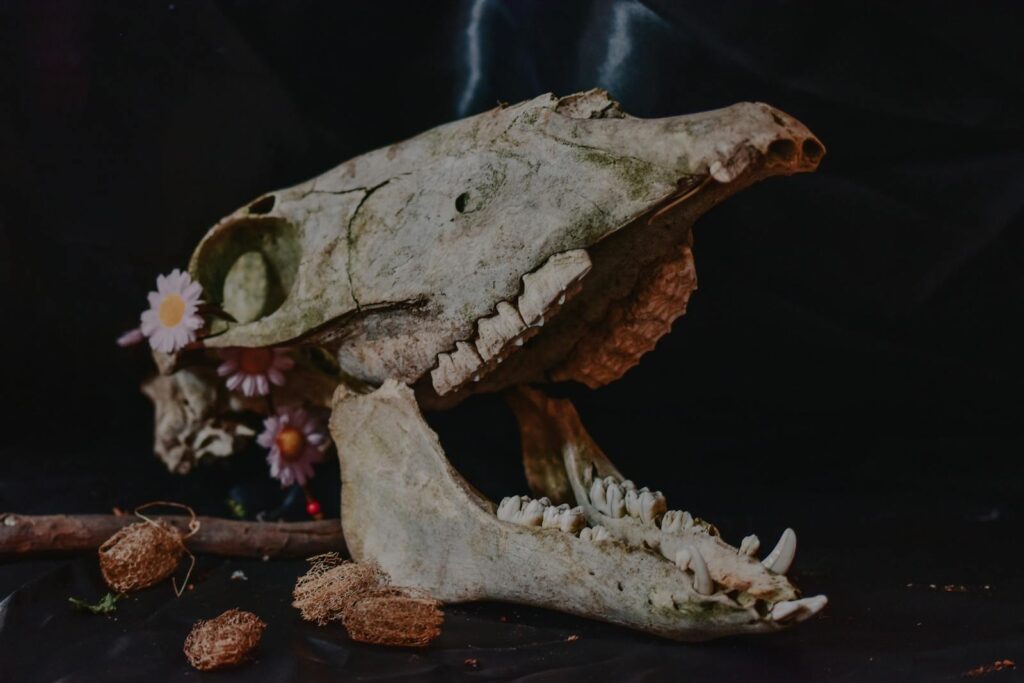
The teeth of bone-crunching specialists often display distinctive adaptations that reveal their feeding behavior. Paleontologists have identified several Mesozoic predators with dental characteristics consistent with bone processing. These adaptations typically include blunt, conical teeth with reinforced enamel, increased tooth base width relative to height, and sometimes specialized crushing teeth in the posterior jaw. For example, certain tyrannosaurids show premaxillary teeth that are D-shaped in cross-section and reinforced in ways suggesting they could withstand the high stresses associated with bone crushing. Similarly, some crocodyliforms from the Mesozoic exhibited crushing dentition in their posterior jaws, suggesting adaptation for processing hard materials including bones. These dental specializations represent evolutionary investments in specific feeding strategies that allowed these predators to access nutritional resources unavailable to competitors.
Cranial and Jaw Specializations

Beyond teeth, bone-crunching specialists typically display cranial and jaw adaptations that enable the generation and distribution of powerful bite forces. Several Mesozoic predators show evidence of these specializations. Tyrannosaurids, particularly Tyrannosaurus rex, possessed extraordinarily robust skulls with extensive reinforcement at stress points, suggesting an ability to generate and withstand tremendous bite forces. Biomechanical studies indicate that T. rex could exert bite forces capable of crushing bone, with estimates exceeding 35,000 newtons at the back teeth. Other adaptations in potential bone-crunchers include shortened, deepened snouts that improve mechanical advantage, expanded areas for jaw muscle attachment, and buttressing features around the tooth-bearing bones. The distribution of these features across different Mesozoic lineages suggests that bone-crunching adaptations evolved independently multiple times, indicating the evolutionary advantage of accessing bone-derived nutrients.
Fossil Evidence: Tooth Marks and Damaged Bones

Perhaps the most direct evidence for bone-crunching behavior comes from fossil bones bearing distinctive damage patterns. Paleontologists have documented numerous specimens from the Mesozoic that show puncture marks, furrows, and crushing damage consistent with predator feeding activities. For instance, hadrosaur fossils from the Late Cretaceous often display puncture and crush marks matching the tooth spacing and morphology of tyrannosaurids. The depth and character of these marks suggest forces sufficient to penetrate cortical bone. In some cases, researchers have found evidence of “bite-and-crush” feeding behaviors, where predators appear to have systematically crushed bones to access marrow or to facilitate swallowing. These taphonomic signatures provide a window into predator-prey interactions and feeding behaviors that would otherwise be lost to time. The distribution of such damage across multiple prey species suggests that bone-crunching was not an occasional behavior but a regular feeding strategy for certain Mesozoic predators.
Coprolite Analysis and Bone Fragments
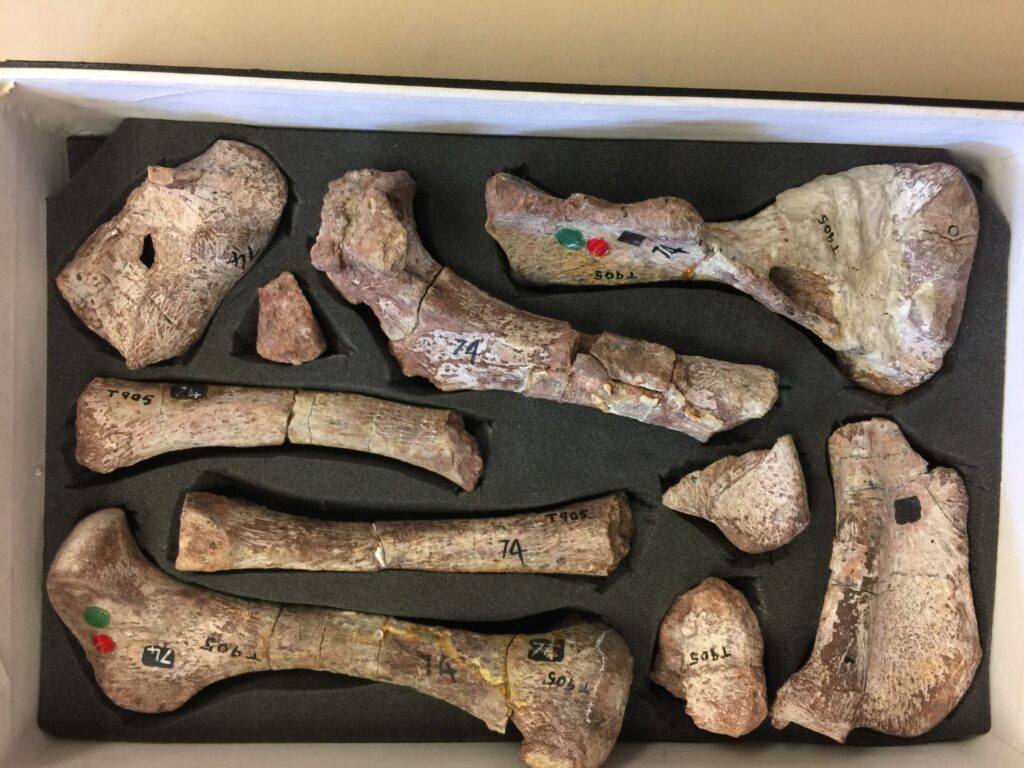
Coprolites, or fossilized feces, offer another line of evidence for bone-crunching behavior in Mesozoic predators. Several remarkable coprolite specimens from the Mesozoic contain significant quantities of processed bone fragments, suggesting that the animals that produced them regularly consumed and attempted to digest bone material. For example, large coprolites attributed to tyrannosaurids have been found containing up to 30-50% bone fragments by volume. The size, shape, and density of these fragments indicate they passed through the digestive tract after being crushed by powerful jaws. Microscopic analysis of these bone fragments often reveals evidence of acid etching, suggesting the predator’s digestive system was adapted to extract nutrients from bone material. This evidence is particularly valuable because it directly connects bone consumption to specific predator taxa, especially when the coprolites can be confidently attributed based on their size, content, and geological context.
Mammalian Bone-Crunchers of the Mesozoic

While dinosaurs and reptiles dominate discussions of Mesozoic predators, evidence suggests that some early mammals also exhibited bone-crunching adaptations. Mesozoic mammals displayed remarkable ecological diversity, with some lineages evolving specialized dentition for processing hard materials. The Late Cretaceous mammal Didelphodon, for instance, possessed robust premolars and powerful jaws that biomechanical studies suggest were capable of crushing turtle shells and bones. Analysis of jaw mechanics in some multituberculate mammals also indicates adaptations for generating significant bite forces relative to their size. These early mammals likely occupied specialized niches, potentially functioning as small-bodied bone-crunchers that could access resources unavailable to larger predators. The presence of bone-crunching adaptations across taxonomic groups highlights how this feeding strategy represented a successful ecological specialization throughout the Mesozoic food web, from small mammals to giant theropods.
The Tyrannosaurid Debate

Among Mesozoic predators, tyrannosaurids have generated the most intensive debate regarding bone-crunching capabilities. These Late Cretaceous theropods possessed several adaptations consistent with bone-crushing behavior, including extraordinarily powerful bite forces, robust teeth, and heavily reinforced skulls. Fossil evidence supporting this behavior includes tyrannosaurid-attributed coprolites containing bone fragments and prey bones bearing distinctive crushing damage. However, some researchers argue that tyrannosaurids were primarily flesh-specialists whose bone damage was incidental rather than targeted. This debate continues to evolve as new evidence emerges. Recent studies using finite element analysis to model stress distribution in tyrannosaurid skulls suggest they could indeed withstand the forces necessary for bone-crushing. Additionally, microscopic analysis of tyrannosaurid teeth shows wear patterns consistent with bone contact during feeding. While the degree of specialization remains debated, the current consensus suggests that adult tyrannosaurids were at minimum capable opportunistic bone-crushers, even if this wasn’t their exclusive feeding strategy.
Crocodyliform Bone-Crushers

Crocodyliforms represent another important group of potential bone-crunchers from the Mesozoic. Unlike their modern relatives which generally possess elongated snouts adapted for catching fish or generalized prey capture, several Mesozoic crocodyliform lineages evolved short, deep snouts with specialized dentition suggesting adaptation for durophagy (feeding on hard-shelled prey) and potentially ostecophagy. The Late Cretaceous alligatoroid Brachychampsa, for instance, possessed robust, blunt posterior teeth and a shortened snout indicating specialization for crushing. Similarly, some notosuchians and baurusuchids from the Cretaceous show dental and cranial adaptations suggesting powerful bite forces capable of processing bones. The broad distribution of these features across multiple crocodyliform lineages suggests that bone-crunching represented a successful ecological strategy that evolved repeatedly during the Mesozoic. These adaptations likely allowed these crocodyliforms to exploit food resources unavailable to other predators, particularly in freshwater and near-shore environments where competition with dinosaurian predators may have driven ecological specialization.
Bone-Crunching Among Marine Reptiles

The oceans of the Mesozoic hosted their own specialized bone-crunchers among marine reptile lineages. Several groups of marine reptiles evolved dental and cranial adaptations suggesting specialization for processing hard prey, including the bones of other marine vertebrates. Certain pliosaurs, for instance, possessed robust conical teeth capable of withstanding high bite forces. Notably, the Middle to Late Triassic placodont reptiles evolved extreme specializations for durophagy, with some species possessing flattened crushing plates instead of typical teeth, allowing them to process hard-shelled prey and potentially bones. Taphonomic evidence supporting marine bone-crunching behaviors includes marine reptile bones bearing distinctive crushing damage attributable to predation. The evolution of these specialized feeding adaptations in marine environments parallels similar specializations on land, highlighting how bone-crunching represented an advantageous ecological strategy across different Mesozoic ecosystems. These marine bone-crunchers likely played important roles in nutrient cycling within Mesozoic ocean ecosystems, similar to the ecological function of bone-consuming organisms in modern marine environments.
Nutritional Advantages of Bone Consumption
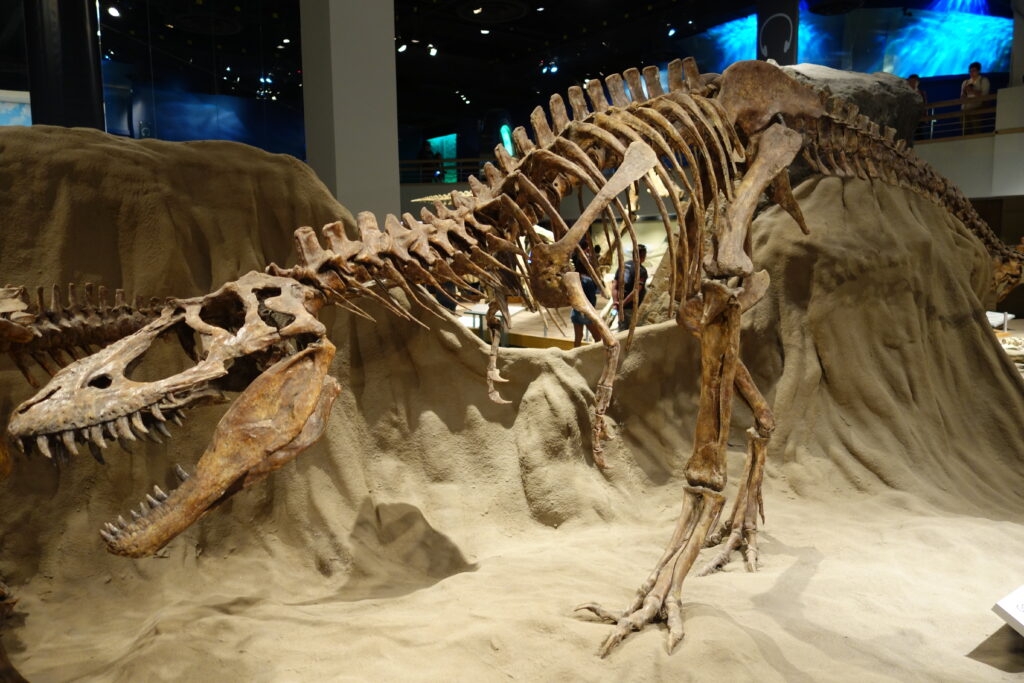
The repeated evolution of bone-crunching adaptations across multiple Mesozoic lineages suggests significant nutritional advantages to this feeding strategy. Bones represent a substantial nutritional resource, containing high concentrations of minerals (particularly calcium and phosphorus), lipids in the form of marrow, and protein in the form of collagen. For predators capable of processing and digesting bone material, these nutrients would provide substantial energetic advantages, especially during periods of resource scarcity. Bone marrow, in particular, represents one of the most energy-dense tissues in vertebrate bodies, containing up to 800 kilocalories per 100 grams. Modern bone-crunchers like spotted hyenas can extract approximately 34-40% more calories from a carcass than non-bone-crushing carnivores by accessing these resources. Mesozoic bone-crunchers likely gained similar advantages, allowing them to maximize nutrient extraction from prey and potentially survive in environments or seasons where other predators might struggle. This nutritional advantage helps explain why bone-crunching adaptations evolved independently multiple times during the Mesozoic.
Ecological Roles and Scavenging

Bone-crunching adaptations have significant implications for understanding the ecological roles of Mesozoic predators. Animals specialized for processing bones typically function as both predators and efficient scavengers, capable of extracting maximum nutritional value from carcasses. This dual role suggests many Mesozoic bone-crunchers likely engaged in opportunistic feeding strategies, both hunting live prey and scavenging when opportunities arose. The presence of specialized bone-crunchers would have influenced carcass persistence and nutrient cycling within Mesozoic ecosystems. By processing bones that would otherwise persist for decades, these animals accelerated nutrient return to the ecosystem. Additionally, the potential for niche partitioning between bone-crunching specialists and flesh specialists might have allowed greater predator diversity within Mesozoic ecosystems. Isotopic analyses of some Mesozoic predator fossils show signatures consistent with scavenging behavior, supporting the hypothesis that bone-crunching and scavenging often co-occurred as part of a flexible feeding strategy that maximized resource utilization.
Ontogenetic Changes in Bone-Crunching Abilities
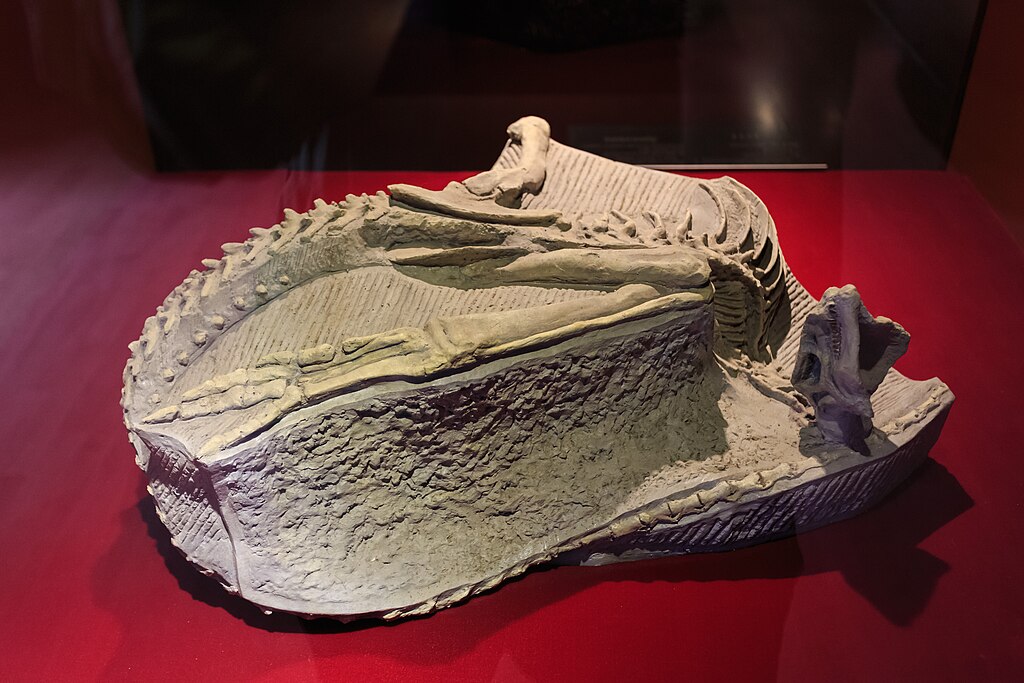
Evidence suggests that bone-crunching capabilities in some Mesozoic predators may have changed throughout their lifespans. Tyrannosaurids represent a well-studied example of ontogenetic shifts in feeding capabilities. Juvenile tyrannosaurids possessed relatively slender skulls with blade-like teeth, suggesting they focused on flesh-slicing rather than bone-crushing. As these animals matured, their skulls became proportionally more robust and their teeth more conical and reinforced, indicating a shift toward greater bone-processing capability. This pattern suggests ecological niche partitioning between juveniles and adults of the same species, potentially reducing competition for resources. Similar ontogenetic shifts have been identified in some crocodyliforms and other theropod lineages. These changes likely reflect both the mechanical constraints of bone-crushing (which requires substantial muscle mass and skeletal reinforcement) and ecological factors related to prey selection and competitive interactions. The evidence for these developmental shifts provides important insights into how Mesozoic predators may have utilized different resources throughout their lives, potentially allowing them to occupy different ecological roles within the same ecosystem.
Future Research Directions

The study of bone-crunching behavior in Mesozoic animals continues to evolve as new analytical techniques and fossil discoveries emerge. Several promising research directions may yield further insights in coming years. Advanced biomechanical modeling, including finite element analysis and multibody dynamics, allows increasingly sophisticated testing of hypotheses about bite force and skull performance in extinct species. Microscopic analysis of tooth wear patterns can reveal evidence of bone contact during feeding that might otherwise be overlooked. Improvements in isotopic analysis techniques may allow researchers to identify bone consumption through chemical signatures preserved in predator remains. Additionally, comparative studies examining bone damage patterns produced by modern bone-crunchers can help refine interpretations of similar damage on Mesozoic fossils. The application of CT scanning and 3D reconstruction to coprolites may reveal previously unidentified bone fragments and improve attribution to specific producers. As these methods advance, our understanding of bone-crunching behavior in Mesozoic ecosystems will continue to become more nuanced and comprehensive.
Conclusion

The evidence for bone-crunching behavior in Mesozoic animals comes from multiple complementary lines of investigation, including anatomical adaptations, biomechanical analyses, coprolite contents, and bone damage patterns. Together, these sources suggest that bone-crunching was a significant feeding strategy employed by various predator lineages throughout the Mesozoic, from small mammals to giant marine reptiles and tyrannosaurids. The repeated evolution of bone-crunching adaptations across different taxonomic groups highlights the ecological and nutritional advantages of this feeding behavior. By accessing nutrients contained within bones that were unavailable to other predators, these specialized consumers likely played important roles in Mesozoic food webs and nutrient cycling. While questions remain about the degree of specialization in some taxa, the accumulated evidence strongly supports the existence of dedicated bone-crunchers throughout the Mesozoic Era. Their presence adds another dimension to our understanding of ancient ecosystems and predator-prey dynamics, reminding us that the Mesozoic world was filled with complex and specialized feeding relationships comparable to those observed in modern ecosystems.


